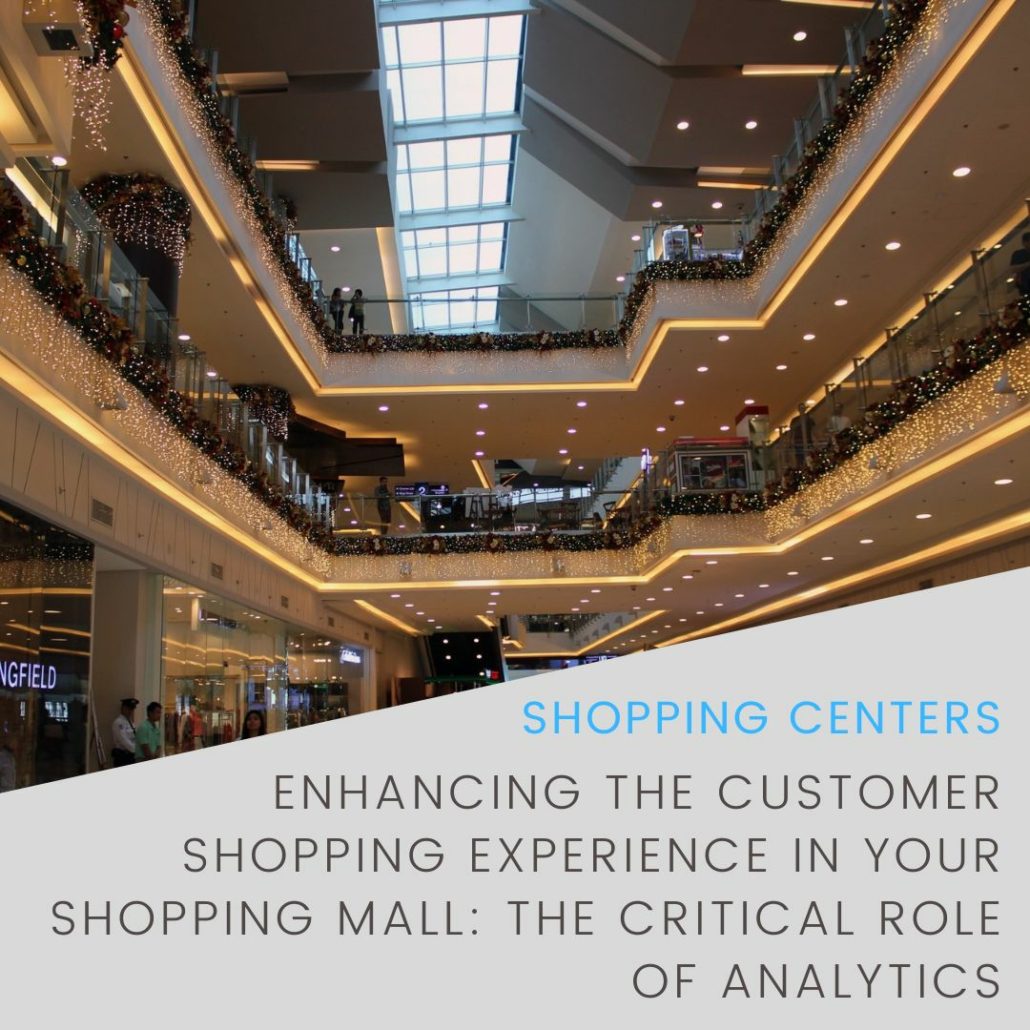In the digital age, shopping malls face challenges in delivering exceptional customer shopping experiences. The role of analytics is a key factor to improve that experience and ensuring the success of the shopping mall. In this article, we will explore the importance of analytics and how it can optimize the customer experience in a shopping mall, maximizing their satisfaction and loyalty.
¿Why the role of analytics is essential?
Understanding consumer behavior and preferences has become increasingly crucial in the competitive landscape of shopping malls. Analytics plays a pivotal role in this context, offering valuable insights into shopper demographics, traffic patterns, and purchasing trends. By leveraging analytics tools, shopping malls can optimize their layout and tenant mix to better meet the needs and preferences of their target audience. Moreover, analytics enables malls to track the effectiveness of marketing campaigns, identify areas for improvement, and enhance the overall shopping experience.
In today’s data-driven world, the role of analytics in shopping malls is indispensable, empowering them to make informed decisions and stay ahead in an ever-evolving retail environment.
Understand Your Customers
Analytics provides valuable insights into customer behaviors, preferences, and purchasing patterns, serving as a powerful tool for shopping malls to stay competitive in the dynamic retail landscape. Through thorough analysis of data collected from various touchpoints, including foot traffic, sales transactions, and demographic information, shopping malls can gain a comprehensive understanding of their customer base.
This deep understanding goes beyond mere demographics, offering insights into consumer preferences, shopping habits, and even emotional responses to different aspects of the shopping experience. Armed with this knowledge, mall operators can tailor their offerings, promotions, and layout to better meet the evolving needs and expectations of their customers.
Additionally, the role of analytics enables malls to identify emerging trends, anticipate shifts in consumer behavior, and proactively adjust their strategies to stay ahead of the curve. In essence, the role of analytics in shopping malls is not just about gathering data—it’s about leveraging actionable insights to drive meaningful improvements and deliver exceptional shopping experiences that keep customers coming back.
Personalization of the Experience
By leveraging the data collected, shopping malls can offer a highly personalized shopping experience that resonates with individual customers on a deeper level. This includes delivering relevant product recommendations, customized discounts, and targeted advertising campaigns based on each customer’s unique interests and preferences. Such tailored offerings not only enhance the overall shopping experience but also foster stronger connections between customers and the shopping mall brand. As a result, customers are more likely to feel valued and appreciated, leading to increased satisfaction, loyalty, and ultimately, repeat visits to the shopping mall.
Optimize Mall Design
Analytics plays a crucial role in enhancing the design and layout of shopping malls by providing valuable insights into customer behavior and traffic patterns. By analyzing data on foot traffic, customer movement, and dwell times, shopping mall operators can identify congested areas as well as underutilized spaces. This data-driven approach allows for strategic placement of stores, amenities, and signage to optimize the flow of customers throughout the mall. Additionally, the role of analytics enables the creation of well-planned layouts that prioritize customer comfort and convenience, ultimately leading to a more enjoyable and satisfying shopping experience for visitors.
Inventory Management and Product Offering
Leveraging analytics enables efficient inventory management and ensures the availability of relevant and in-demand products within your shopping mall. By analyzing sales data, trends, and customer preferences, you can make data-driven decisions regarding inventory levels, effectively avoiding both product shortages and excess stock. Furthermore, analytics allows you to anticipate future customer needs and proactively adjust your inventory and offerings accordingly. This proactive approach not only enhances customer satisfaction by ensuring that desired products are readily available but also maximizes sales opportunities and minimizes inventory-related costs for the shopping mall.
The role of analytics in your Shopping Center
Analytics is critical in enhancing the customer shopping experience in your shopping mall. By understanding your customers, personalizing the experience, optimizing mall design, and efficiently managing inventory, you can create an appealing environment that promotes customer satisfaction and loyalty.
Investing in suitable analytics tools becomes a competitive advantage, ensuring the long-term success of your shopping mall.
Shopping malls







